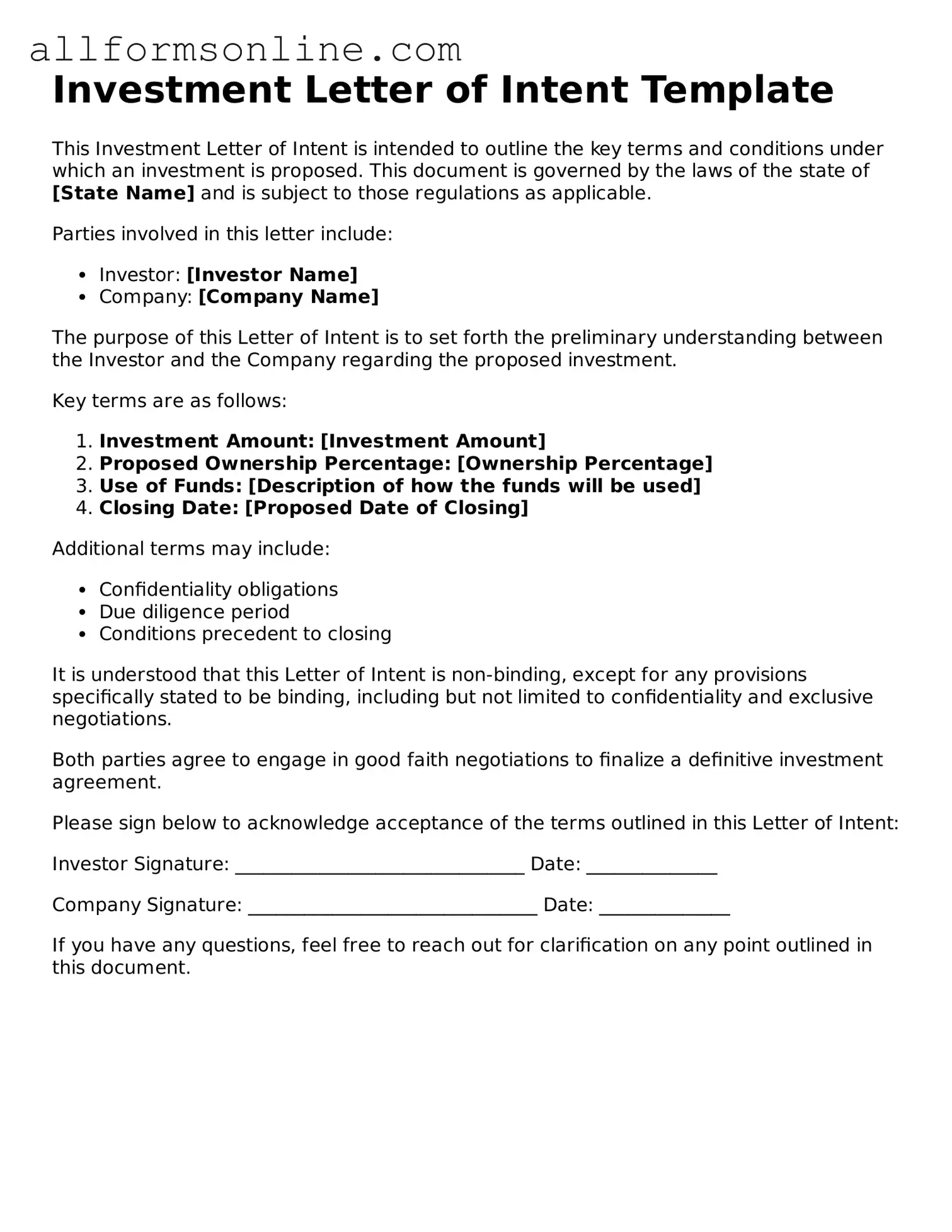What is an Investment Letter of Intent?
An Investment Letter of Intent (LOI) is a preliminary document that outlines the terms and conditions under which an investor intends to make an investment in a business or project. It serves as a formal expression of interest, paving the way for further negotiations and the drafting of a more detailed agreement. While it is not legally binding, it sets the stage for the investment process.
Why is an Investment Letter of Intent important?
This document is crucial because it clarifies the intentions of both parties involved. By detailing the proposed investment amount, timeline, and other essential terms, it helps prevent misunderstandings later on. It also demonstrates the investor's commitment, which can be beneficial for the business seeking funding.
What should be included in an Investment Letter of Intent?
An effective Investment Letter of Intent typically includes several key components: the names of the parties involved, the amount of the proposed investment, the purpose of the investment, any conditions that must be met before the investment is finalized, and a timeline for the transaction. Additionally, it may outline confidentiality agreements and exclusivity terms, ensuring that both parties are protected during negotiations.
Is an Investment Letter of Intent legally binding?
Generally, an Investment Letter of Intent is not legally binding. It is meant to express intent rather than create enforceable obligations. However, certain sections, such as confidentiality agreements or exclusivity clauses, may carry legal weight. It’s important to specify which parts of the LOI are binding and which are not to avoid confusion.
How does an Investment Letter of Intent affect negotiations?
The LOI serves as a foundation for negotiations. It provides a clear starting point, allowing both parties to discuss specific terms and conditions in detail. By establishing mutual understanding upfront, it can streamline the negotiation process and help avoid potential disputes down the line.
Can an Investment Letter of Intent be modified?
Yes, an Investment Letter of Intent can be modified. As negotiations progress, either party may request changes to the terms outlined in the LOI. It’s important to document any modifications in writing to ensure that both parties are on the same page. Clear communication during this phase can lead to a smoother final agreement.
